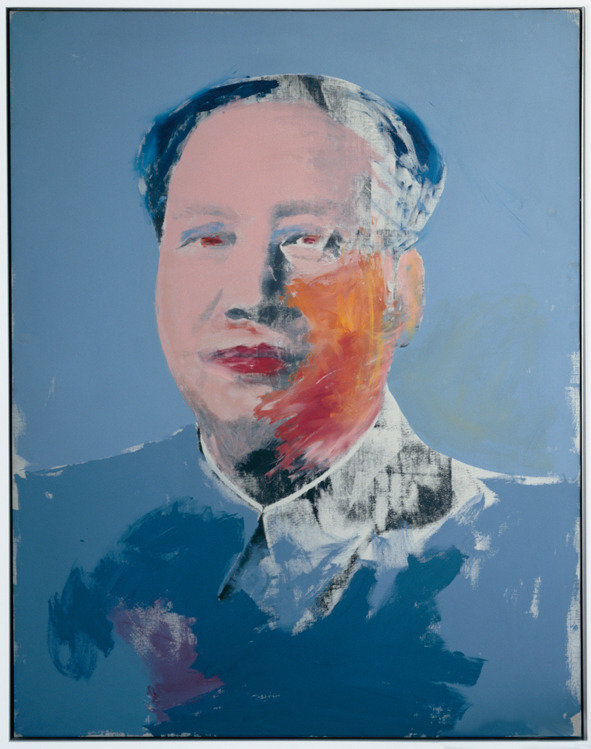27 works, 18 authors
dal 9/2/2011 al 30/12/2011
Segnalato da
Andy Warhol
Antonio Saura
Manuel Millares
Darío Villalba
Miquel Barcelo'
Nino Longobardi
Jose' Manuel Broto
Christo
Jean Arp
Lucio Fontana
Susana Solano
Claudio Bravo
Antoni Tapies
Man Ray
Jose' Ma Sicilia
Luis Lugan
Zush
Alberto Garcia-Alix
9/2/2011
27 works, 18 authors
Fundacio' Sunol, Barcelona
On show 27 works by Andy Warhol, Antonio Saura, Manuel Millares, Dario Villalba, Miquel Barcelo', Nino Longobardi, Jose' Manuel Broto, Christo, Jean Arp, Lucio Fontana, Susana Solano, Claudio Bravo, Antoni Tapies, Man Ray, Jose' Ma Sicilia, Luis Lugan, Zush y Alberto Garcia-Alix, from Josep Sunolt Collection.

On show 27 works by Andy Warhol, Antonio Saura, Manuel Millares, Darío Villalba, Miquel Barceló, Nino Longobardi, José Manuel Broto, Christo, Jean Arp,
Lucio Fontana, Susana Solano, Claudio Bravo, Antòni Tàpies, Man Ray,
José Ma Sicilia, Luis Lugán, Zush y Alberto García-Alix.
Room 1
Our visit to the exhibition gets under way with pop art icon Andy Warhol’s portrait
of Mao Tse Tung. At the height of the Cold War, 1972 marked the start of a rap-
prochement between the United States and China, and Warhol’s creative response
was to demythologise the Chinese leader’s face by colouring it as a symbol of the
new power of the mass media and a parody of authoritarian culture in the People’s
Republic of China.
Room 2
Five Man Ray photographs of his friends Picasso, Dalí, Miró, Calder and Giacometti
reflect a feeling of calm and quiet. They stand in stark contrast to Antonio Saura’s
highly radical, transfigured and reconstructed image. More than thirty years separate
these two artists’ visions of the human face.
Room 3
Freely expressive artists José Manuel Broto, José María Sicilia, Zush and Susana
Solano are a good example of the powerful rediscovery of painting and sculpture
in 1980s art in Spain. These four highly gestural pieces use direct interaction and
nonverbal communication through very different symbolic universes to those from
the previous conceptual phase.
Room 4
Artist Manolo Millares, born in the Canary Islands and cofounder of the El Paso group,
personally created this dark, impenetrable arpillera tapestry that takes us back to
the Guanche aborigines. Opposite, Darío Villaba’s Pies vendados, created fifteen
years after Millares’ piece as a photographic emulsion on canvas, is a metaphysical,
unclassifiable work, somewhere between figurativism and informalism that packs a
powerful emotional punch.
Room 5
Two pieces from the 1970s: Andy Warhol’s famous Campbell’s Soup Cans silkscreen
printing, which uses pop art to stress the mechanical uniformity of an everyday object
and ridicule the consumer society; and Grifo sonoro, a unique, inimitable sound piece
by Luis Lugán, a groundbreaking figure in electronic art.
Room 6
The spotlight is on the object in Antoni Tàpies’ sculptures, both from 1987, which
fill this space and show us the ever-present materiality in his work. Three Alberto
García-Alix photographs reveal the everyday in three images of eloquent shoes,
the Columbus statue-object in Barcelona wrapped by Christo, and Claudio Bravo’s
enigmatic wrapped Paquete negro, which all illustrate objectuality as a phenomenon
of dialectic intentionality between subject and object.
Room 7
Nature, first interpreted through subtle organic forms in Jean Arp’s and Lucio
Fontana’s sculptures, is rethought in Miquel Barceló’s still lifes and Nino Longobardi’s
laid table, where the primitive, free lines turn the still lifes into scenes full of aes-
thetic tension.
Image: Andy Warhol, Mao ̧1972
Opening 10 February 2011, 19h
Fundacio' Sunol
Passeig de Gràcia 98, Barcelona
Opening hours: Monday to Saturday, 4pm to 8pm
Closed Sundays and Public Holidays



